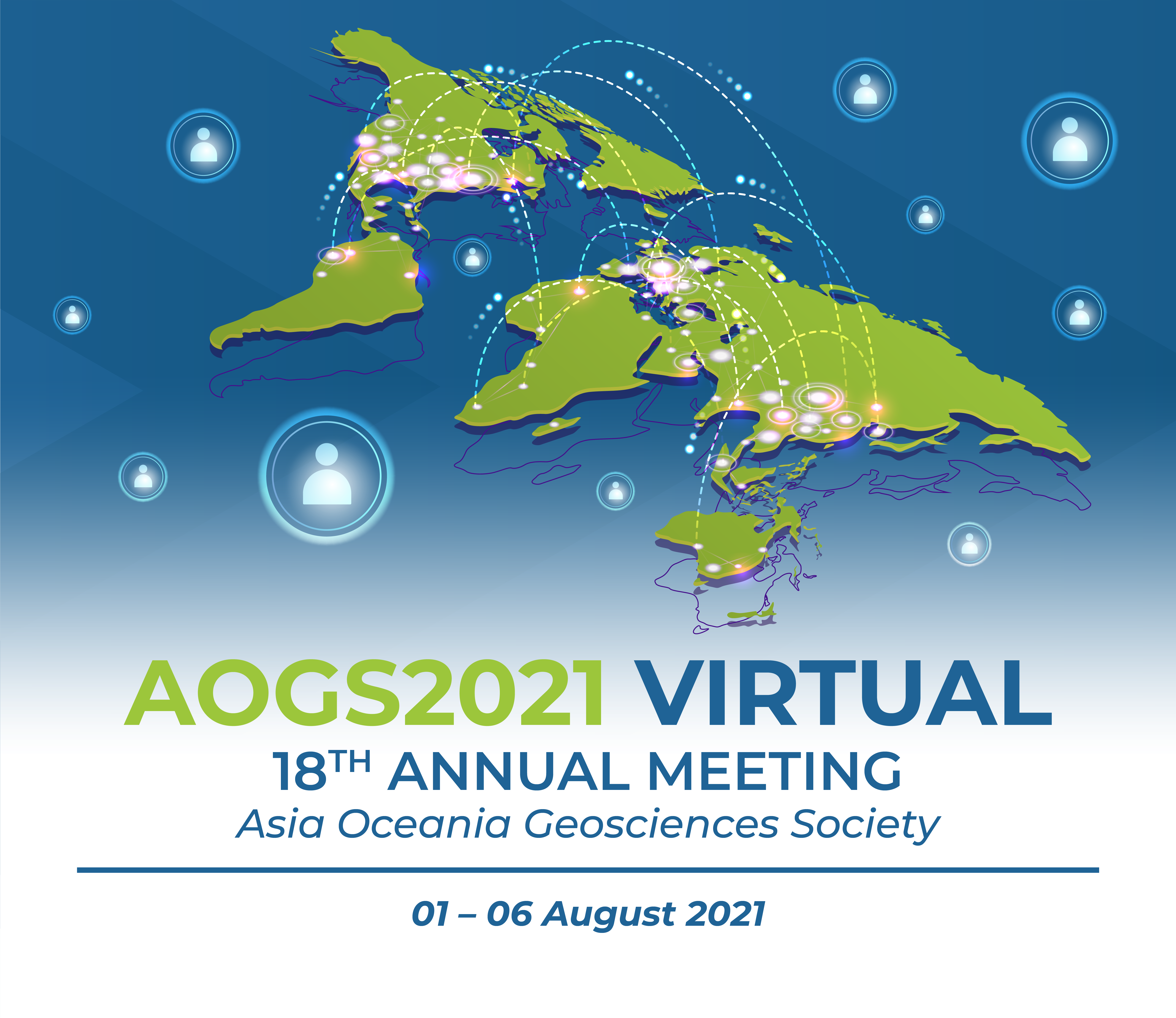

*Attend these AOGS2021 Webinars Free! – Registered Attendees Only
All AOGS e-news subscribers are eligible to attend. Please help us forward this information to your friends and
professional contacts. If not yet a subscriber, they need sign up for an account on MARS to receive
the complimentary invite. Not yet a subscriber?
Sign up Here to Receive Your Complimentary Invitation
Axford Lectures | Medal Lectures | Section Distinguished Lectures
All times shown are Singapore Standard Time (GMT+8)
| SE Section Lectures & Meeting | Room: WB1 |
| Transition | 13:00– 13:30 |
| SE Kamide Lecture | 13:30 – 14:15 |
| SE Distinguished Lecture | 14:15 – 15:00 |
| SE Section Meeting | 15:00 – 16:00 |

Thu-05 Aug, 13:00 – 16:00, Room: WB1
Distinguished Lecture - SE (Save a seat)
“Visualized seismic hazard and risk from physics-based earthquake modelling for resilient society”
Kuo-Fong MA
National Central University
Building a resilient society from natural hazard, a communication through bringing in frontier science to people is a necessary and keen step, especially now in this new digital era with various social media. For this lecture, I focus on the on-going developing aspect of combining frontier science with high-density ground motions and large open data pools to better predict ground-shaking to quantify and visualize the potential impact of earthquakes. We initiate this from the community based national seismic hazard map to an event based seismic hazard simulation with relevance to the government end-user and communities. Taiwan Earthquake Model (TEM), the organization established through the government funding agency in 2012, aims to improve understanding of probabilistic seismic hazard and risk assessment by integrating the earthquake science, earthquake engineering and social science communities of Taiwan. Through TEM probabilistic seismic hazard analysis from the identified seismogenic structure, the back ground and historical seismicity, the impact of the seismic potential to the metropolitan cities could be identified, and provide further actions for risk management. The shakeout scenarios for metropolitan cities (e.g. Taipei, Tokyo, Los Angeles, and Aukland), had been widely deployed to understand the hazard and risk for the seismic prone countries. The scenarios were built by identifying known earthquake faults/structure and relevant geological details with three-dimensional simulations of wave propagation, the ground shakings were developed, which produce the relevant parameters for impact analysis.
The fragility curves were made accordingly through the archived damaging data for various building types. Using dense seismological networks, the latest generation of ground-motion databases, data-mining analyses, crowd-sourcing data, and smart-city technologies to evaluate ground-shaking for site responses to assess earthquake hazard and risk. We intend to develop the methods to give better estimates of loss in the absence of direct and detailed data on the economic and human impacts. This information could be map-based to help government agencies in deciding policies on natural hazard disaster prevention, building code and retrofit policy. Additionally and importantly, it can also provide the user-end information to industrial partners to reduce the economy impact from their risk management on the continuation of business interruption from damaging earthquakes.
Biography
Kuo-Fong Ma is a Distinguish Research Fellow at the Institute of Earth Sciences, Academia Sinica, Taipei, and Distinguish Professor and Director of Earthquake- Disaster & Risk Evaluation and Risk Management (E-DREaM) Center, National Central University, Taiwan. She also serves as Chief Scientist of Taiwan Earthquake Research Center (TEC) located in Institute of Earth Sciences, Academia Sinica, where the organization of Taiwan Earthquake Model (TEM) was funded under Ministry of Science and Technology (MoST) with the objective to improve understanding of probabilistic seismic hazard and risk assessment by integrating the earthquake science, earthquake engineering and social science communities of Taiwan. Her research interests include earthquake seismology, earthquake physics, engineering seismology and seismotectonics. She was former presidents of Chinese Geoscience Union, and Geological Society of Taiwan. She currently serves in the board of Seismological Society of American. She received several national and international awards, including the National Science Council Distinguished Research Award, National Award of Ministry of Education Academic in Natural Science in 2007, Outstanding Female Scientist Award in 2011; the National Professorship in Natural Science of the Ministry of Education in 2013; the fellow of American Geophysical Union in 2019.